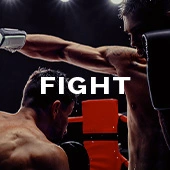By Keith Idec
Jim Lampley didn’t bite his tongue regarding boxing’s broken pay-per-view model, the same television vehicle the company that employs him helps support.
The veteran HBO blow-by-blow announcer was critical of pay-per-view boxing during the newest episode of “The Fight Game with Jim Lampley.” It debuted Wednesday night on HBO.
In the episode’s opening monologue, Lampley lamented the pay-per-view business done by several shows in the aftermath of the Floyd Mayweather Jr.-Manny Pacquiao fight in May 2015.
That long-awaited, incomparably hyped showdown drew a record 4.6 million buys and generated an astounding $600 million-plus in overall revenue. Ultimately, though, it turned off hardcore and casual boxing fans alike because it didn’t deliver enough action and because Pacquiao complained of a pre-existing shoulder injury after losing a 12-round unanimous decision at MGM Grand Garden Arena in Las Vegas.
“This has been a year of waiting for boxing,” Lampley said, “as the sport struggles to regain a more positive bond with fans in the aftermath of the bombshell attraction that failed to lift off. It is one of boxing’s multiple curses, that pay-per-view numbers have become a recognized indicator of where the sport stands in the marketplace. And it’s inescapable that in the wake of Mayweather-Pacquiao, several attempts at resuscitation brought drownings instead. We’re talking about Golovkin-Lemieux, Crawford-Postol, Canelo-Liam Smith, Pacquiao-Vargas, even Kovalev-Ward. Reporting is hazy, but it appears none of those cards drew 300,000 buys. And the fact of the matter is, if it isn’t going to top that number, it probably shouldn’t be pay-per-view.”
While Lampley couldn’t be more right about that, HBO Sports currently has more pay-per-view shows on its 2017 schedule (two) than “World Championship Boxing” and “Boxing After Dark” telecasts combined (one).
The two pay-per-view shows HBO Sports is scheduled to distribute will be headlined by a Miguel Cotto-James Kirkland junior middleweight match on February 25 in Frisco, Texas, and the Gennady Golovkin-Daniel Jacobs middleweight title fight on March 18 at Madison Square Garden.
The lone live broadcast on HBO’s schedule is set for January 28.
Francisco Vargas (23-0-2, 17 KOs), the WBC world super featherweight champion, will face WBO super featherweight title-holder and fellow Mexican Miguel Berchelt (30-1, 27 KOs) in the “Boxing After Dark” main event that night from Fantasy Springs Resort Casino in Indio, California. Japan’s Takashi Miura (30-3-2, 23 KOs), a former WBC super featherweight champion, will meet Mexico’s Miguel Roman (56-11, 43 KOs) in the co-featured fight that night.
Meanwhile, Lampley continued his monologue Wednesday night by emphasizing that broadcasting boxing on premium-cable channels, HBO and Showtime, is the most viable way in this day and age to serve the sport’s fan base.
“As the year concludes, boxing still follows the strongest business model,” Lampley said. “Premium pay networks like this one and Showtime, depending on subscribers like you to keep coming back to the most fickle mistress in sports. So it was here that you saw Terence Crawford go into New York for the first time, and switching into his trademark southpaw stance to knock out Hank Lundy. And 10 months later, he was doing more of the same at home in Omaha, against the game but outmatched John Molina. It was here that you saw Gennady Golovkin knocking out Dominic Wade in Los Angeles, then travel to London to fill the O2 Arena with British opponent Kell Brook, before breaking Brook’s orbital bone with his first serious left-hand punch. It was here that you saw Roman “Chocolatito” Gonzalez picking up two more wins to run his amazing record to 46-0, with 38 knockouts, adding a title in a fourth weight class and joining Roberto Duran as the only two Central American fighters ever to accomplish that.
“And it was here you watched Sergey Kovalev and Andre Ward both polish off lesser opponents, two apiece, on the way to the year’s most significant, big-talent showdown. But nowadays, it isn’t unusual for star fighters to circle each other for months, even for years, before actually accepting the risk of entering the ring to face each other. Amid the ongoing public argument over the unanimous decision for Ward, it’s probably too easy to lose track of the thing for which both fighters deserve credit – they made us wait, but not forever. They actually did fight. And now, in the wake of what happened, it's downright inconceivable that they won’t fight a rematch. That’s actually one of the best takeaways from the year in the ring, 2016.”
Keith Idec is a senior writer/columnist for BoxingScene.com. He can be reached on Twitter @Idecboxing.



